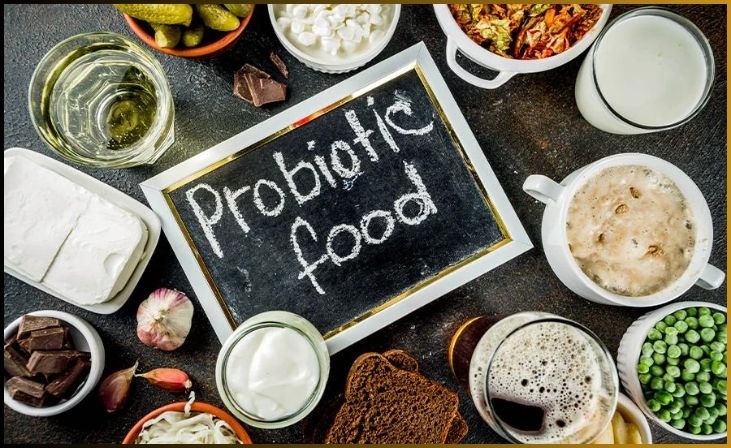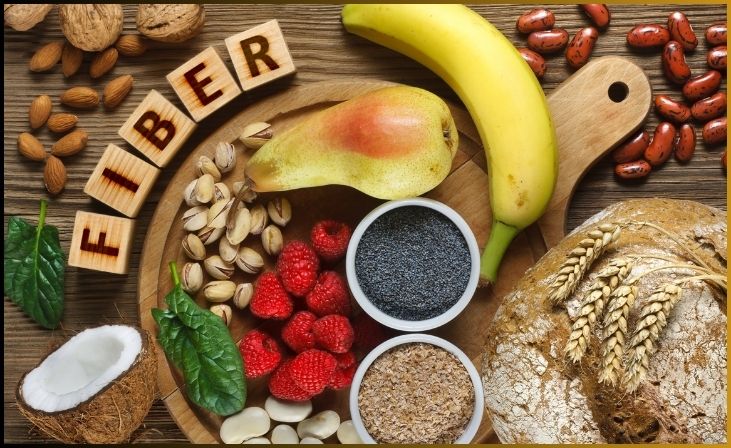Embarking on the journey to optimal health often begins within, where the intricate balance of your gut flora holds the key to well-being. In this informative article, we will reveal the simplicity of repairing and sustaining a healthy gut flora.
Explore six accessible pathways to elevate your gut health, from savoring probiotic-rich delights to embracing mindful habits that resonate through your digestive ecosystem. Join us as we delve into the world of gut wellness, empowering you with practical insights to cultivate a thriving inner garden.
Discover how small, intentional choices can pave the way to digestive harmony, resilience, and a healthier, more vibrant you. Let’s plant the seeds of happiness and learn how to simply restore healthy gut flora.
Table of Contents
ToggleWays to Restore Healthy Gut Flora
Discover the secrets of gut harmony with our guide on ‘Ways to Restore Healthy Gut Flora.’ Discover the simple yet effective activities that nurture your inner ecology and promote general well-being, from probiotic-rich meals to mindful behaviors. Explore the path to a thriving gut one conscious choice at a time.
Also Read- 6 Tips for a Healthy Digestive and Immune System
1. Embrace Probiotics in Your Diet

Embracing probiotics in your diet is akin to inviting a team of superheroes to champion your gut health. Probiotics, often found in fermented foods like yogurt, kefir, sauerkraut, and kimchi, are living microorganisms that confer numerous benefits. By incorporating these probiotic-rich delights into your daily meals, you introduce a battalion of friendly bacteria into your digestive system.
These beneficial microbes aid in maintaining a balanced gut flora, supporting digestion, and fortifying your immune system. So, whether it’s enjoying a spoonful of tangy yogurt with breakfast or savoring the complexity of sauerkraut at lunch, each bite contributes to the flourishing landscape of your gut microbiome, promoting a resilient and thriving internal environment.
2. Fiber-Rich Feasts

Indulging in fiber-rich feasts is a flavorful journey toward cultivating a thriving gut environment. Foods abundant in fiber, such as fruits, vegetables, whole grains, and legumes, serve as a banquet for the trillions of microbes residing in your gut. These indigestible fibers, known as prebiotics, act as a nourishing fuel for beneficial bacteria, fostering a diverse and resilient microbiome.
By incorporating a variety of fiber-rich foods into your daily meals, you not only support regular digestion but also create an ecosystem that promotes the flourishing of health-enhancing microbes. So, whether it’s the crunch of fresh vegetables or the wholesome goodness of whole grains, each fiber-packed bite contributes to the symphony of your gut’s well-being.
3. Mindful Eating Practices

Mindful eating practices extend beyond the act of eating to encompass a comprehensive approach to sustenance and well-being. You establish a stronger connection with your food and its influence on your body by enjoying each bite with intention and presence. This mindful approach goes beyond the plate to encompass an awareness of the entire dining process. Chew slowly, relish the flavors, and engage all of your senses.
Don't just scroll, subscribe!
BuzzTrail's unique web-stories are the cure for boredom you've been waiting for.
Such mindfulness not only enhances the pleasure of eating but also supports optimal digestion. Importantly, mindful eating helps alleviate stress, a known disruptor of gut health. By incorporating these practices into your meals, you not only foster a harmonious relationship with food but also contribute to a balanced and flourishing gut microbiome.
4. Stay Hydrated

Staying hydrated is a cornerstone of overall health, and its influence extends deeply into the realm of gut well-being. Adequate hydration facilitates the transportation of nutrients, aids in digestion, and maintains the integrity of the mucosal lining in the intestines. By making a conscious effort to drink sufficient water throughout the day, you not only support your body’s essential functions but also create an environment conducive to a thriving gut microbiome.
Herbal teas and hydrating fruits and vegetables, in addition to ordinary water, can help you meet your daily fluid requirements. The simple act of staying hydrated is a powerful and accessible means of promoting gut health, ensuring that your internal ecosystem remains well-hydrated and primed for optimal functionality.
5. Exercise Regularly

Regular exercise is not only a catalyst for physical fitness but also a dynamic force in nurturing a healthy gut. Engaging in a mix of aerobic and strength-training exercises not only benefits your cardiovascular system but also positively impacts the diversity of your gut bacteria. Physical activity has been linked to an increase in microbiological richness, which promotes to a more robust and diverse microbiome.
Whether it’s a brisk walk, a rejuvenating yoga session, or a strength-building workout, regular exercise plays a crucial role in fostering an environment where beneficial bacteria thrive. So, lace up those sneakers, find activities you enjoy, and let your commitment to regular exercise become a cornerstone in cultivating a flourishing and resilient gut ecosystem.
6. Prioritize Quality Sleep

Prioritizing quality sleep is a cornerstone of holistic well-being, and its impact reverberates profoundly in the realm of gut health. The connection between sufficient, restorative sleep and a balanced gut microbiome is intricately woven. During sleep, the body undergoes essential processes, including cellular repair and hormonal regulation, that extend to the intricate ecosystem of the gut.
Adequate sleep supports the integrity of the intestinal barrier and promotes a harmonious balance among gut bacteria. Disruptions to your sleep patterns can lead to imbalances in the microbiome, potentially impacting digestive health. Thus, by making a conscious effort to prioritize quality sleep, you not only rejuvenate your body and mind but also contribute to the overall vitality and resilience of your gut environment.
For More- 10 Ways to Walk Better Daily: A Step Towards Healthier Living
Conclusion
Nurturing your gut microbiome doesn’t require drastic measures; rather, it’s about incorporating simple, sustainable practices into your daily life. From savoring probiotic-rich foods to embracing mindful eating and prioritizing sleep, these six strategies empower you to actively contribute to the well-being of your gut flora. By fostering a thriving microbiome, you’re not only supporting digestion but also enhancing your overall health, immunity, and vitality. Start implementing these practices today, and let the journey to a healthier gut begin.
FAQs
How long does it take to notice improvements in gut health with these practices?
How long does it take to notice improvements in gut health with these practices?
Individual responses vary, but some may experience positive changes in a few weeks. Consistency is key; give your body time to adjust to the new habits, and consult a healthcare professional if you have specific concerns.
Can I take probiotic supplements if I’m lactose intolerant?
Can I take probiotic supplements if I’m lactose intolerant?
Yes, there are many probiotic supplements that are lactose-free. Look for supplements specifically designed for individuals with lactose intolerance. Always consult with a healthcare provider before adding new supplements to your routine.
How can I incorporate more fiber into my diet without causing digestive discomfort?
How can I incorporate more fiber into my diet without causing digestive discomfort?
Gradually increase your fiber intake to allow your digestive system to adjust. Stay hydrated, and choose a variety of fiber sources. If needed, consider soluble fiber supplements. If digestive issues persist, consult a healthcare professional.

